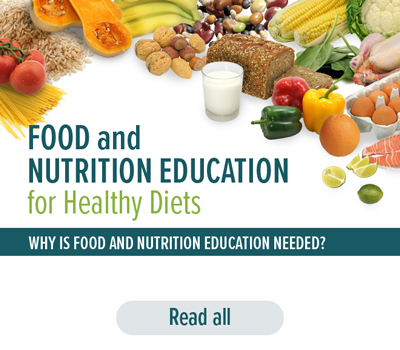
A healthy diet for children includes fruits and vegetables. A majority of fruits and vegetables are high in iron, vitamin B12, vitamin C, and vitamin D. Some eggs can even be fortified with omega-3 fat acids to help children's brain development. A cup of fruit contains about a dozen or so calories, and most fruits are cut into small pieces. As a snack, fruit can be eaten fresh or dried.
Juice should always be consumed in moderation. A maximum of one to two portions per day is recommended if you want your child to have a controlled sugar intake. Rather than sprinkling juice on your child's plate, serve a bowl of actual fruit. It will improve their diet with fiber and other important nutrients. Additionally, juice can cause them drink too much between meals. This could pose a danger to their health. You need sodium to maintain body fluids and nerve function. But too much sodium can increase your risk of developing heart disease or high blood pressure. High sodium content is common in processed foods.

A new study revealed that 60 percent of children's food products are unsafe. In a survey of 156 products, the researchers found that more than half of them contained added sugar, 15.4% had saturated fat and seven percent had salt. Researchers also examined how companies label "healthier" foods, and what they contained. This study showed that processed foods are often not listed with the ingredients. They also lack the essential vitamins, minerals that children need to grow strong and healthy.
Sugary and processed foods can have serious health consequences for parents. Parents need to be aware of the health risks associated with sugary and processed foods. You should focus on whole foods and avoid processed foods. Instead, they should encourage them to eat foods rich with vitamins and minerals. It will help them form positive eating habits in future. There are many things you can do to encourage your child towards eating more fruits and veggies. Your child can follow your example and eat a healthy diet.
It is important for children to eat a variety and healthy diet. Each meal should contain at most one serving of each. The recommended fruit or vegetable intake for children is between one cup per day (for toddlers) and three cups per week for teenagers. Flaxseed and omega-3 fatty fish are great sources of fats. Certain fruits and veggies are rich in fiber and antioxidants.

Milk is a good source calcium and vitamin, and helps build strong bones. It also contains about 8 grams of protein. Children under two years of age should not be allowed to consume dairy products. Children should not consume eight ounces or more of cow's dairy milk each day. It's fine to substitute cow's dairy milk for low-fat milk once they reach this age. Cheese and yogurt aren't necessarily healthy but they are excellent sources of calcium, vitamin D, and protein.
FAQ
Is Yoga Beneficial?
Yoga has been popular since ancient times. It is now very popular among celebrities and even ordinary people who want to look fit and healthy.
Yoga is great for strengthening and stretching your muscles. Yoga can also help calm your mind and relax you.
Yoga is different from other types of exercise in that it focuses on breathing techniques.
To improve your balance and flexibility, you can try different poses.
Is Cardio Better Than Strength Training?
Both are equally good. For those who want to gain muscle quicker, cardio is a better choice.
Cardio burns more calories per minute than strength training and burns more fat.
Strength training increases muscle mass but takes more time than cardio.
What is the best 7-day workout program?
A seven-day exercise plan should include cardiovascular training (running/biking/swimming), strength exercises (using weight machines, free weights) and one flexibility/core program (yoga or Pilates). Each activity must be completed at least once per week. Maximum 45 minutes should be allotted for each session.
Cardiovascular Exercises: Running, biking, swimming
You should aim to get at least 60 mins of cardio exercise per week. Aim for 75 minutes per week to get the best results. Cardio exercises can be used to increase blood flow, stimulate muscle growth, and improve blood circulation.
Strength Training
While cardio exercises target the heart and lungs, strength training targets the muscles and bones. Strength training helps you burn calories even while resting.
Flexibility and Core Workouts
Your whole body will be stronger if you have flexibility and core training. Both yoga or Pilates are great options.
What is the best way to train?
It all depends upon what you are trying to achieve. You should start with heavy weights if your goal is to build muscle mass. Next, you can move onto cardio. If you are looking to lose weight, then move on to strength training.
Start with cardio if you only want to lose fat. Then add strength training after.
You should do cardio last if your goal is to increase muscle mass. This stimulates growthhormones, which helps build muscle mass.
Eat before you go to the gym. This will fuel your muscles, making them work harder. This will make you feel better while working out.
Statistics
- Candidates and applicants must pass all four tests at 70% (minimum level) to graduate from Basic Deputy U.S. Marshal (BDUSM) Training. (usmarshals.gov)
- Get free shipping and 25% off today. (healthline.com)
- 10 pounds in a month is likely during a lean bulking phase, especially for beginners. (muscleandstrength.com)
- Are You One of the 20% of Guys (mh.co.za)
- According to the American Heart Association, blood pressure should be checked at least once every two years, beginning at age 20. (my.clevelandclinic.org)
External Links
How To
What should I eat before going to the gym?
For weight loss, you should eat fewer calories per day than you burn during exercise. Also, you must eat all the nutrients.
This includes protein, carbohydrates fats, vitamins and other nutrients.
You can do this by eating smaller meals throughout your day instead of three large ones.
Working out if you are hungry can cause you to perform poorly.
Drinking water is a better option than energy drinks high in caffeine and sugar. This will keep your body hydrated and energized.
You should ensure that you get enough fluids. Drinking too much water could dilute the electrolytes in your system.
For proper functioning, your body requires electrolytes.
Sports drinks are an option if you don't have water. They are rich in sodium, potassium, calcium and magnesium as well as other minerals.
These help replenish electrolytes lost through sweating. However, they still won't replace what you've lost from sweating.
A multivitamin pill can be taken if you worry about losing too much salt while exercising.
These supplements contain additional vitamin B6, which can help regulate your body's sodium levels.
Supplements are not recommended if you don’t know the amount of salt in your food or beverages.
They aren’t controlled by the Food and Drug Administration.
One example is that some sports drinks contain more sodium.
Some sports drinks might contain artificial sweeteners, preservatives, or both. These may cause digestive problems.
Sea salt is an option if you don't want to eat too much salt.
It contains less chemicals than table sodium.
Sea salt is low in iodine as another mineral necessary for healthy thyroid function.